- Introduction
- What are group norms?
- Why create group norms intentionally
- How to create healthy group norms
- Find allies
- Reflect
- Get specific
- Agree
- Gently enforce
- Reevaluate
Have you ever been part of a team that simply worked? Think of a time where communication was easy, goals were met, and everyone felt valued. How about the opposite?
In 2011, Google realized that teams across the company didn’t have a unified approach to working together. Some teams chatted about their weekends, while others were all business all the time; some teams actively listened to teammates, while others thrived with frequent conversational interruptions; some teams created a flat structure for group decision making, while others revolved around a single person’s authority.
Some teams were effective while others … weren’t.
After years of studying hundreds of teams, Google’s researchers came to the conclusion that great teams are built deliberately upon shared values — otherwise known as group norms.
What are group norms?
Group norms are the set of informal and formal ground rules that dictate how people interact. These rules help members of the group figure out how to behave — clarifying roles and providing a sense of predictability.
Teams with specific, clear ground rules have a few advantages:
- Meetings and communication are more constructive, with unified rules and language.
- Teammates have a shared value system and are working together to achieve goals.
- Everyone knows what is expected of them, so they can meet (and exceed) expectations.
- Conflicts can be resolved more easily with overlapping understanding.
- New teammates can get up to speed more quickly while the group maintains a healthy company culture.
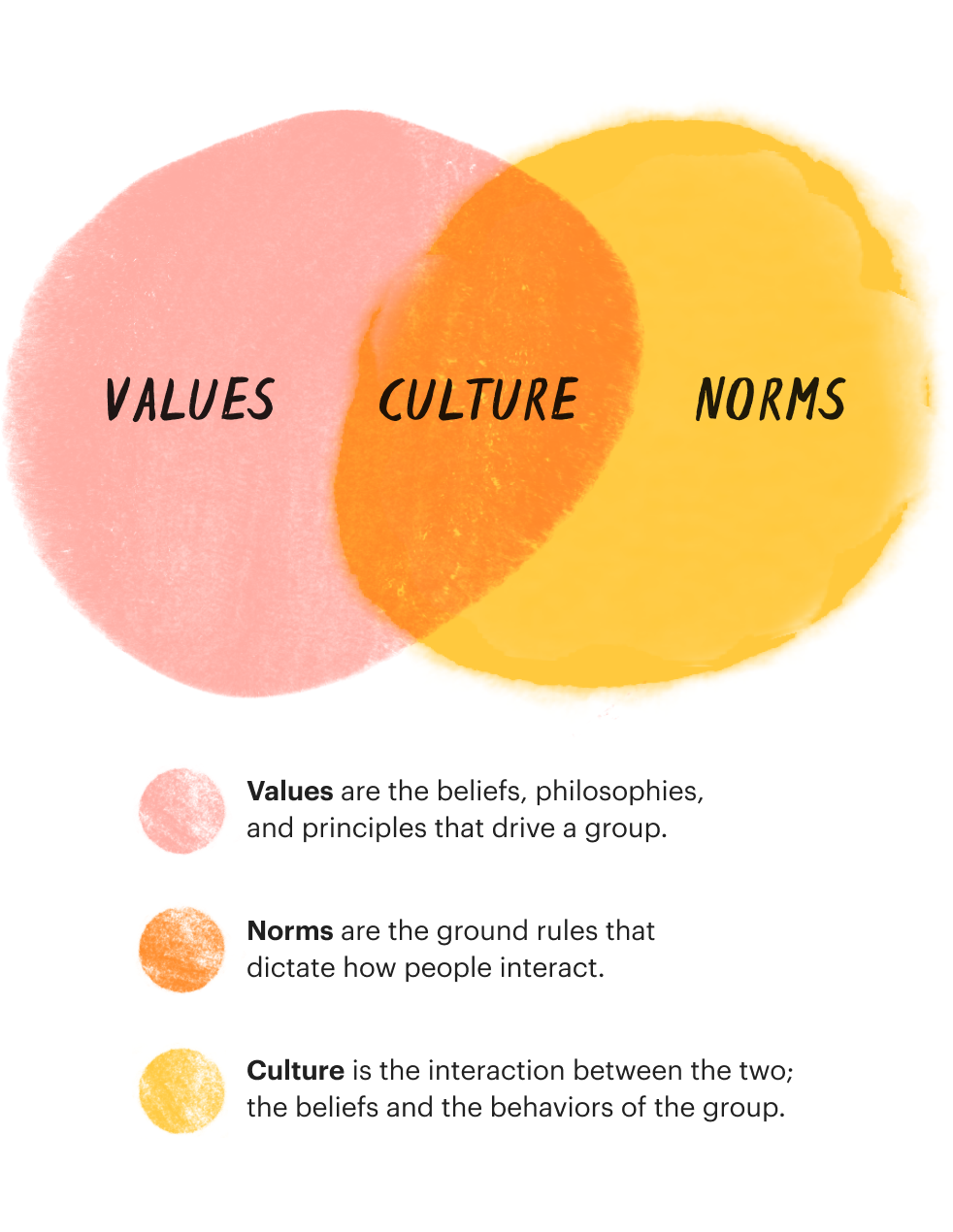
Why is creating them intentionally important?
From what to wear to what counts as “on time” to a meeting, every team has norms — but not all of them are crafted on purpose. In fact, the majority of group norms come about without any discussion at all.
Take written communication, for example. If a group starts as a team of two, it’s easy to get away with long email back-and-forths punctuated by quick text message pings. But the more team members added, the more complex keeping everyone in the loop becomes. Soon, enough reply-alls about weekend plans and real-time group text decision-making lead to an overwhelming number of unreads and plenty of lost information.
Some teams’ typical behavior is even created via a snowball effect, where a single individual dictates the rules for the group. Without healthy group norms, a lone boss with a late-night communication habit can affect an entire company. And studies show that dealing with after-hours work communication creates anxiety that hurts workers and their families.
How can you create healthy group norms?
Setting up norms is easiest when a team is forming. Getting members on the same page before working together might take an extra meeting upfront, but it saves time (and headaches) down the road.
Codifying or shifting group norms in already-formed teams is possible, too. Cultivating positive behavioral expectations on high-functioning teams makes onboarding new members and upholding culture over time far easier. Changing group norms on teams that are having difficulty communicating requires truly looking at the problem and creating a plan to enact a solution.
Here are the simple steps to solidify your team’s shared rules and regulations:
Find allies
While a single person can start a discussion on team dynamics and expectations, the entire team needs to be engaged in the process for the real magic to happen. After all, one person can’t control the behavior of anyone but themself — let alone an entire group.
Whether building a new team or rebooting a group with history, creating norms requires buy-in from a majority of teammates — including leadership. Without a team leader’s blessing, it’s extremely difficult to change the conventions for the rest of the team.
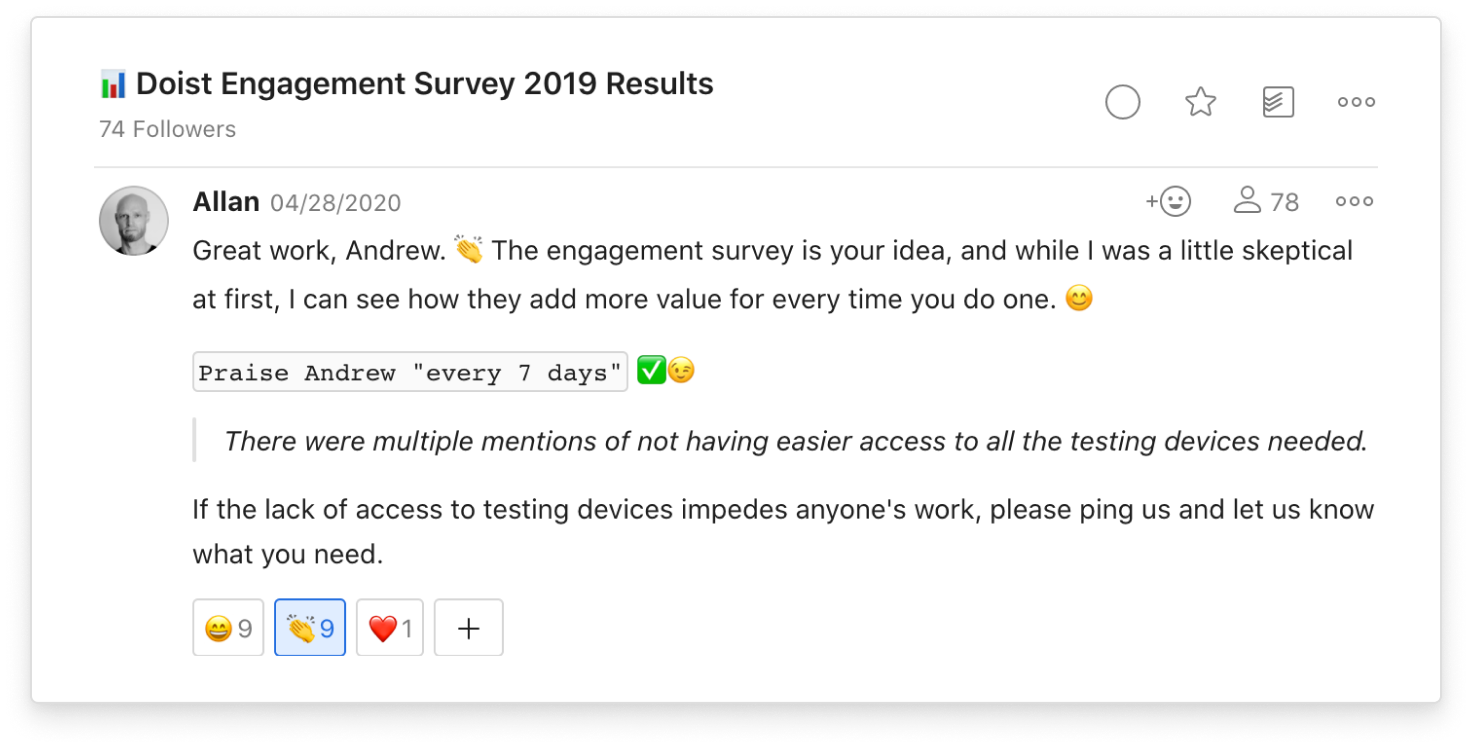
Reflect
Once you have the support of team members and leaders, the next step is figuring out what is working now (and what isn’t). It’s helpful for team members to reflect individually on their most positive experiences during teamwork as well as their most negative experiences. Sharing the highs and lows as a group can help uncover some collective truths.
Sometimes the current group norms get in the way of future group norms. In the marketing department at outdoor-retailer REI, training in the Radical Candor approach was helpful for the team to move away from a culture of sugar-coated and unclear criticism and into one where kind but clear feedback was typical.
Any group would do well to follow this candid approach. Coming to these group norm reflections with honesty, kindness, sincerity, and specificity is paramount. Vague statements and a bias toward over-politeness can lead to miscommunication and disappointment about the process in the future.
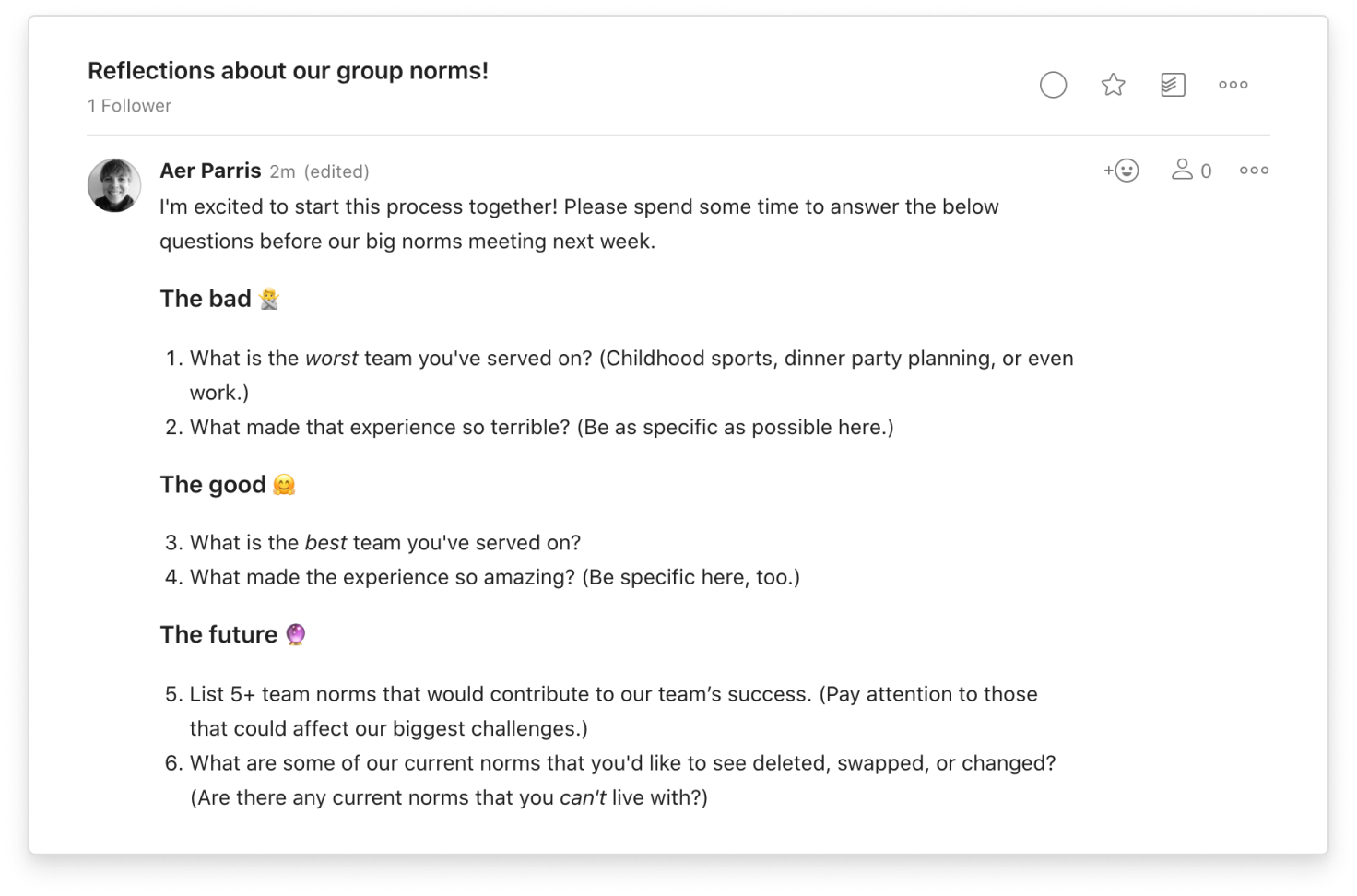
Get specific
“What managers expect can differ greatly from what employees believe their managers expect,” writes Todoist Ambassador Maura Thomas about email communication norms. In her work as a speaker and trainer on productivity, she has found that when managers don’t provide clear direction, employees fill the vacuum with assumptions.
To ensure this doesn’t happen on your team, take time to be extremely clear, and write down the group’s shared expectations. The trick to success? Straightforward objectives and guidelines that are both measurable and achievable.
After a share-out of each person’s honest reflections, everyone on your team should have an idea of what is working and what isn’t. It’s helpful to take notes about each person’s ideas of great and not-so-great norms. With those two lists side-by-side, the team as a whole can pick and choose the best of the list. From there it’s as simple as massaging them into concise, digestible written norms that uphold positive behaviors and attitudes and change any unhealthy patterns.
Pro tip: While you can have as many current group norms that you’d like to carry into the future, deciding on no more than three changes you’d like to make systematically is a great place to start.
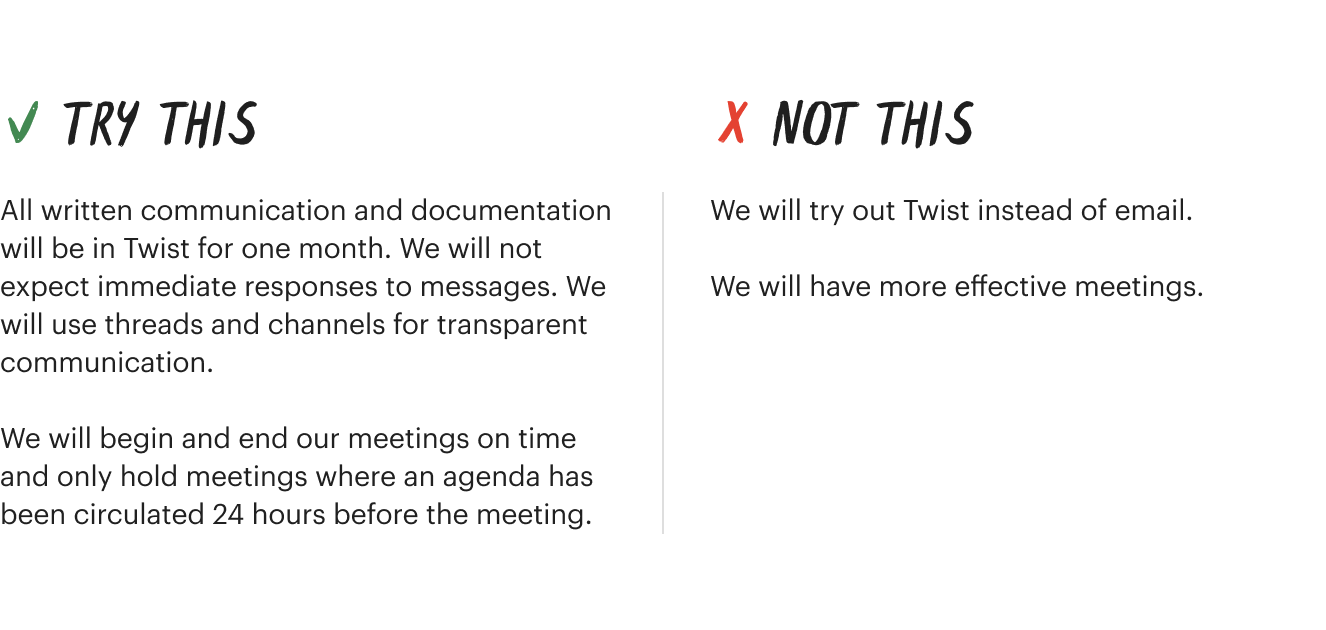
Agree
Group norms are most effective when everyone follows them — and for that, you need consensus. If everyone on the team agrees from the beginning to adhere to the norms that you’ve laid out together, holding each other accountable will be much easier.
Every August all new faculty at The Bush School, a tiny independent school in Seattle, Washington, gather together for a peacemaking circle. Drawing on ancient indigenous practices, each participant has a chance to say one norm they’d like to have in the space. In every additional round, members can ask clarifying questions about the norms, add additional norms, or pass. This additive process creates a space where everyone is heard — and sets the tone for the rest of the year.
However you reach an agreement, it’s important to post your norms somewhere visible and refer to them regularly. Did you create virtual meeting norms? Post them in the chat box or put them on the first slideshow of your presentation at the beginning of each meeting. What about quarterly review feedback discussion guidelines? Send them out with the agenda.
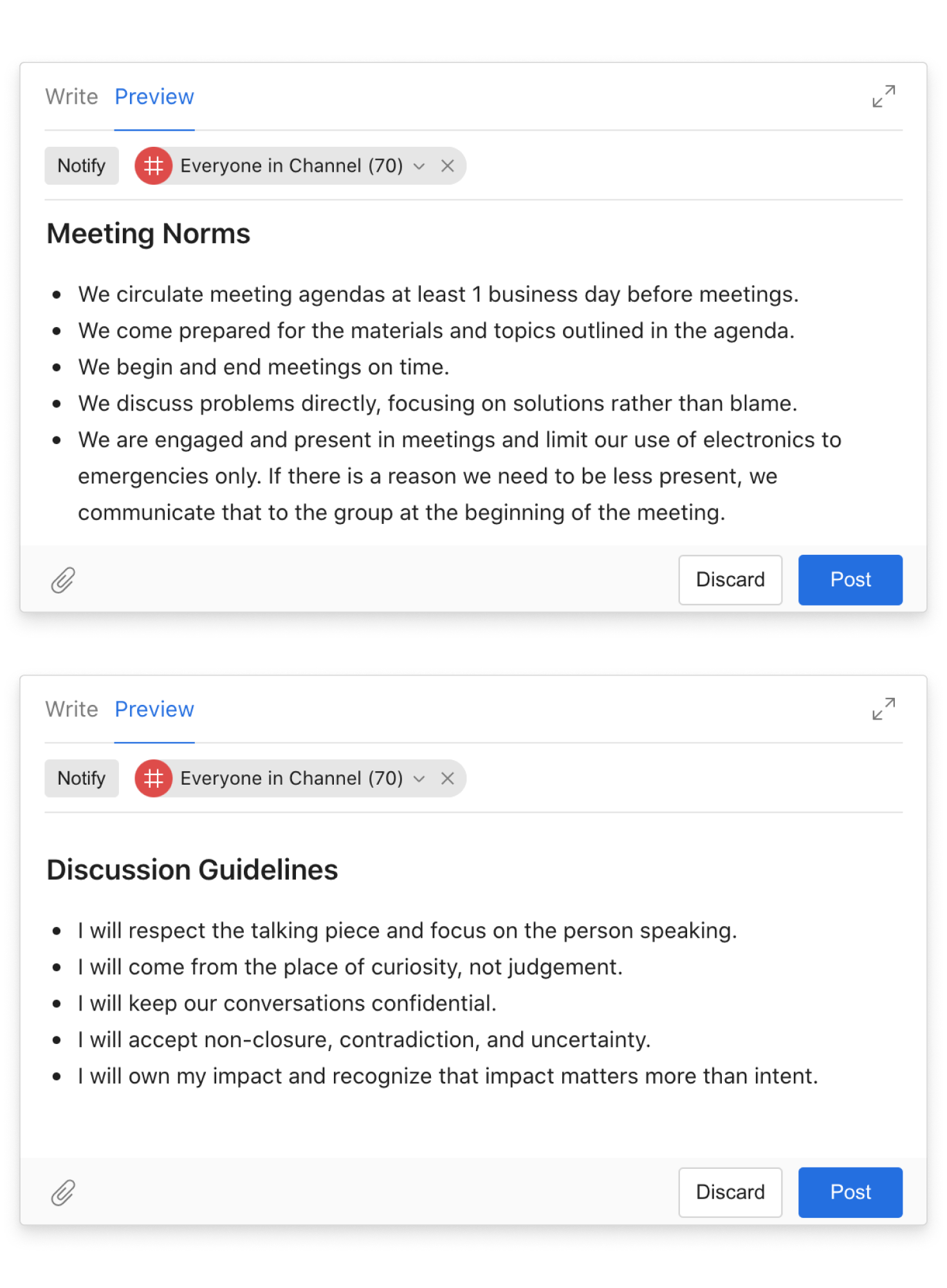
Gently enforce the norms
Whether building a team and guidelines from scratch or changing the fundamentals of established working relationships, it’s normal and expected that these rules will be bent or broken. Deciding in advance how to deal with slip-ups can make the transition from unspoken norms to written norms smoother.
“If you don’t call attention to the fact that a norm has been violated, in effect you’re creating a second set of norms,” says Kathryn Blumsack, a specialist in professional development of board members. “For example, a common norm is expecting everyone to be on time. If you don’t point out when someone violates that norm, then, in effect, you’re saying that it’s really not important to be on time.”
It’s helpful to keep in mind that all group members should take responsibility for enforcing the norms — not just group leaders. An effective way to do peer-to-peer enforcement is to add humor into the mix. Swear jars and waving colored hankies for discussion violations have been effective (and fun) for some groups that Blumsack has been part of.
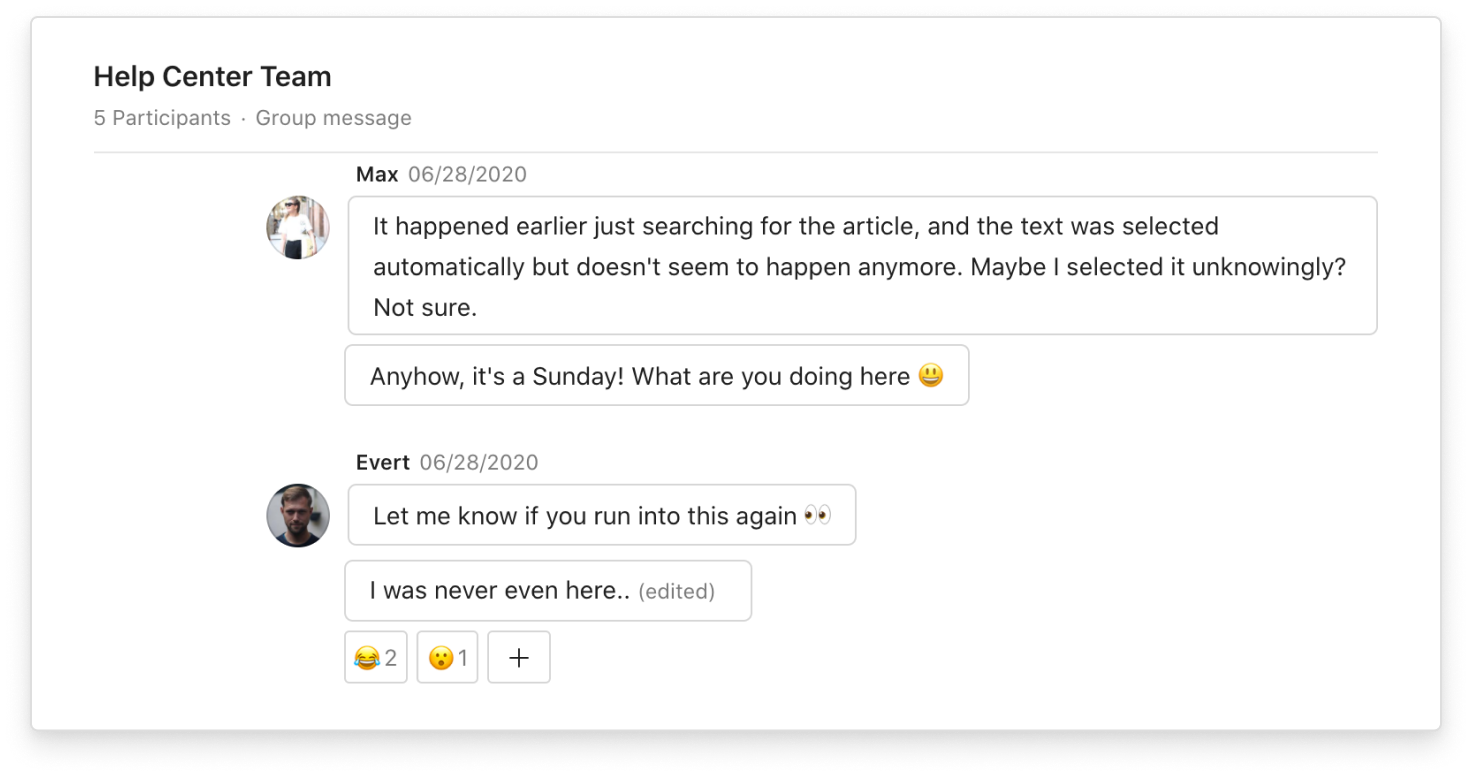
Reevaluate
Norms are living agreements, not commandments chiseled a single time into stone. It’s important to continue to revisit them and amend them as the team grows and changes. Some groups revisit these each time they start a meeting, begin a project, or once a quarter. Whatever the case, scheduling a regular cadence to provide feedback on the norms keeps the positive momentum going.
Here at Doist, we make a practice out of doing post-mortems after launches — especially when there have been hiccups along the way. Combining personal reflection with high standards leads to amendments and, ultimately, better cohesion moving forward.
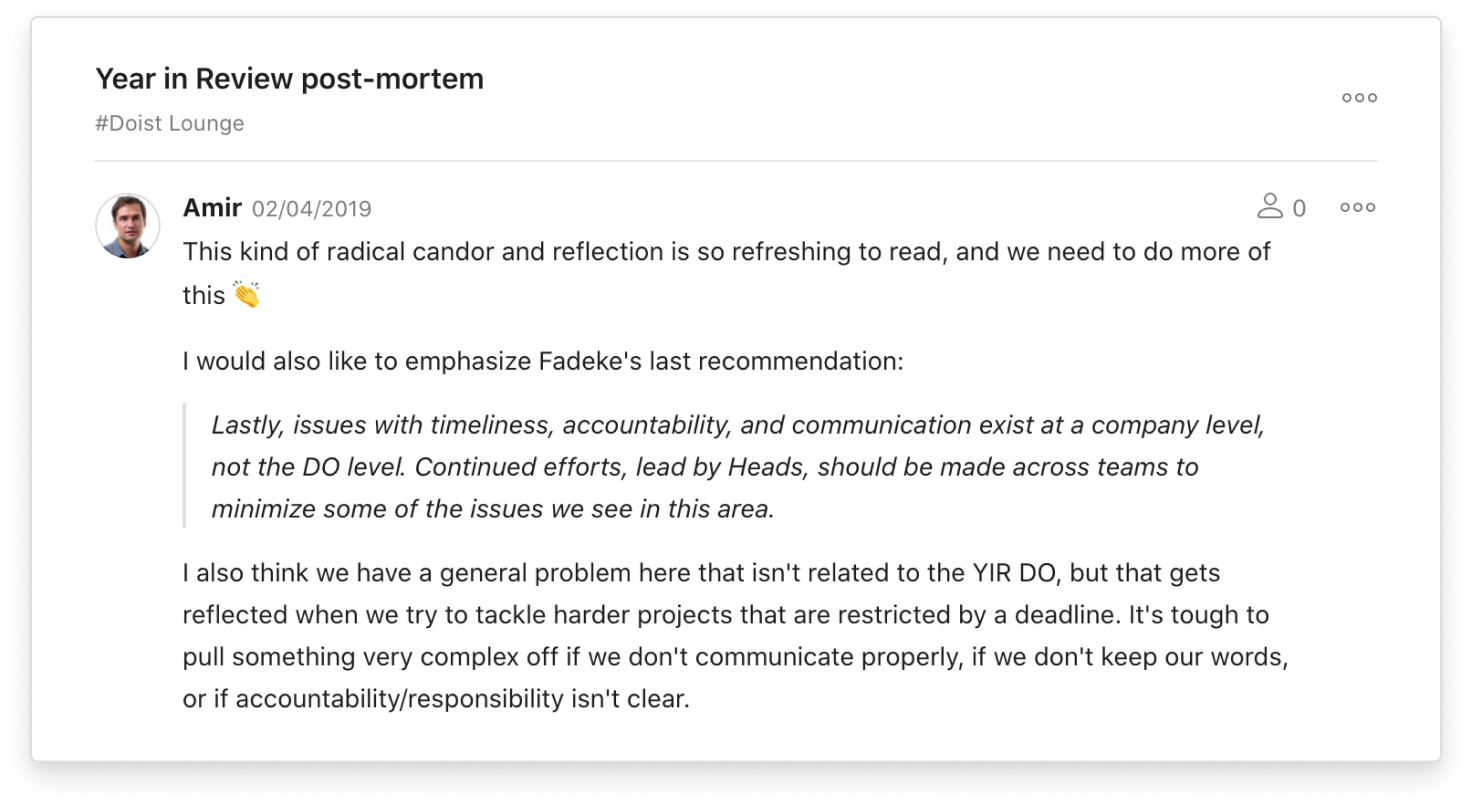
So what happened at Google?
Google spent millions of dollars in their norm-finding initiative dubbed Project Aristotle. Their researchers found that the ability to take risks in a safe environment was at the top of the list of group norms that made for happier, higher-performing teams. Fostering that environment involved a few simple group norms that the company then cascaded across all teams:
- Demonstrate engagement: Be present in conversations and use active listening skills.
- Show understanding: Recap discussion points and validate comments verbally.
- Be inclusive: Build rapport, solicit feedback, and express gratitude for teammates.
- Show confidence and conviction: State your decisions clearly while still allowing for vulnerability.
Creating group norms is as simple as asking ourselves, and those around us, how we’d like to interact. From company-wide culture to personal meeting etiquette, finding common values is often about asking: What would work for you?
Sometimes little questions have the biggest impact.

